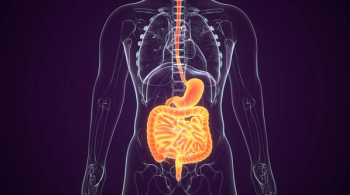
sNDA Submitted to FDA for Venetoclax Plus Acalabrutinib in Untreated CLL
AMPLIFY trial results form the basis of the submission, with venetoclax/acalabrutinib showing a PFS advantage vs chemoimmunotherapy in patients with CLL.
Developers have submitted a supplemental new drug application for a fixed duration, oral combination of venetoclax (Venclexta) in combination with acalabrutinib (Calquence) in patients with previously untreated chronic lymphocytic leukemia (CLL), according to a news release from AbbVie.1
Results from the phase 3 AMPLIFY trial (NCT03836261) form the basis of the submission, with the combination showing a progression-free survival advantage vs chemoimmunotherapy. Efficacy findings from the phase 3 trial published in the New England Journal of Medicine revealed that the combination elicited a 36-month progression-free survival (PFS) rate of 76.5% (95% CI, 71.0%-81.1%) vs 66.5% (95% CI, 59.8%-72.3%) with chemoimmunotherapy (HR, 0.65; 95% CI, 0.49-0.87; P = .004).2
Additional efficacy results found that the estimated 36-month overall survival rates in the venetoclax and chemoimmunotherapy arms, respectively, were 94.1% (95% CI, 90.7%-96.3%) vs 85.9% (95% CI, 81.0%-89.6%), with an HR of 0.33 (95% CI, 0.18-0.56; P < .001). Furthermore, the 36-month event-free survival rates were 75.9% vs 64.5%.
Response rates favored the venetoclax-based regimen, with an overall response rate of 92.8% vs 75.2% with chemoimmunotherapy. Additionally, 28.1% of patients in the venetoclax arm had a response to treatment but subsequently experienced disease progression vs 33.9% in the chemoimmunotherapy group.
"This FDA submission marks a milestone for CLL treatment with the potential approval for the first oral combination regimen of [venetoclax] and acalabrutinib for [patients with] previously untreated chronic blood cancer. This new fixed-treatment duration approach could allow patients the opportunity for time off treatment, if approved, and be potentially practice-changing in frontline CLL care," Svetlana Kobina, MD, vice president of Global Medical Affairs, Oncology at AbbVie, said in the news release.1
Patients with previously untreated CLL were randomly assigned 1:1:1 to receive venetoclax/acalabrutinib (n = 291), acalabrutinib/venetoclax/obinutuzumab (Gazyva; n = 286), or investigator’s choice of chemoimmunotherapy (n = 290). Crossover was not permitted on trial, and patients were stratified by age, IGHV mutational status, Rai stage, and region.
Those assigned to venetoclax/acalabrutinib received 100 mg of acalabrutinib twice daily from cycles 1 to 14 and venetoclax once daily from cycles 3 to 14, and a ramp-up dose over 5 weeks from 20 mg to 400 mg. Patients in the chemoimmunotherapy group received intravenous fludarabine/cyclophosphamide/rituximab (Rituxan) or bendamustine (Bendeka)/rituximab for the first 6 cycles according to standard dosing procedures. All treatments were given in 28-day cycles.
In the acalabrutinib/venetoclax and chemoimmunotherapy arms, the median age was 61 years (range, 31-84) and 61 years (range, 26-86), respectively. Most patients in either arm were male (61.2% vs 63.1%), treated in Europe (63.2% vs 63.1%), had an ECOG performance score of 0 or 1 (90.0% vs 90.3%), and unmutated IGHV (57.4% vs 59.3%). Additionally, 38.8% vs 42.8% of the respective arms had bulky disease greater than 5 cm, 47.1% vs 43.8% had Rai stage III or IV disease, and the median time from initial diagnosis to randomization in either arm was 28.5 months (IQR, 8.0-62.2) vs 29.6 months (IQR, 9.3-53.9).
The primary end point of the trial was PFS per blinded independent central review. Undetectable minimal residual disease was a key secondary end point. Other secondary end points included EFS, ORR, complete response rate with incomplete marrow recovery, and duration of response, as well as safety.
In the venetoclax/acalabrutinib and chemoimmunotherapy arms, respectively, 92.8% vs 91.1% of patients experienced any grade adverse effects (AEs). Grade 3 AEs occurred in 53.6% vs 60.6% of the respective arms, and serious AEs occurred in 24.7% vs 27.4%. Serious AEs leading to death occurred in 3.4% vs 3.5% of each arm, 2.7% vs 2.7% of which were related to COVID-19 infection.
The most frequent AEs of any-grade included neutropenia, hemorrhage, and COVID-19 infection in the acalabrutinib-venetoclax arm, and tumor lysis syndrome was only observed in 0.3% of this arm vs 3.1% of patients who received chemoimmunotherapy. No new safety signals were identified in the trials.
References
- AbbVie submits for U.S. FDA approval of combination treatment of VENCLEXTA® (venetoclax) and acalabrutinib for previously untreated patients with chronic lymphocytic leukemia (CLL). News release. AbbVie. July 29, 2025. Accessed July 29, 2025.
- Brown JR, Seymour JF, Jurczak W, et al. Fixed-duration acalabrutinib combinations in untreated chronic lymphocytic leukemia. N Engl J Med. 2025;392(8):748-762. doi:10.1056/NEJMoa2409804
Newsletter
Stay up to date on recent advances in the multidisciplinary approach to cancer.

















































































